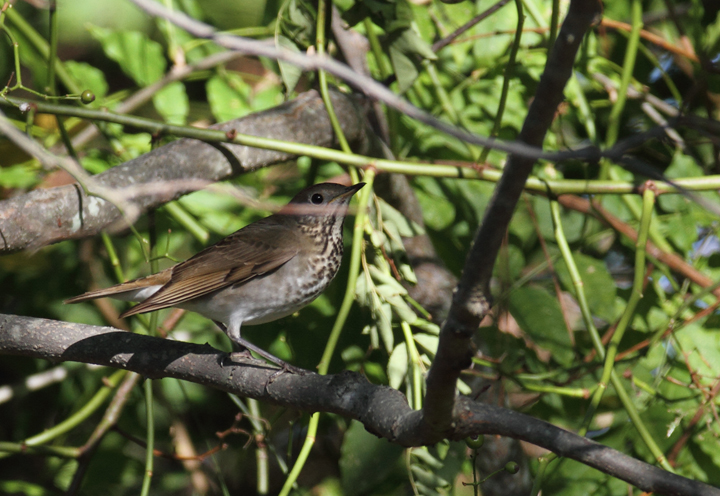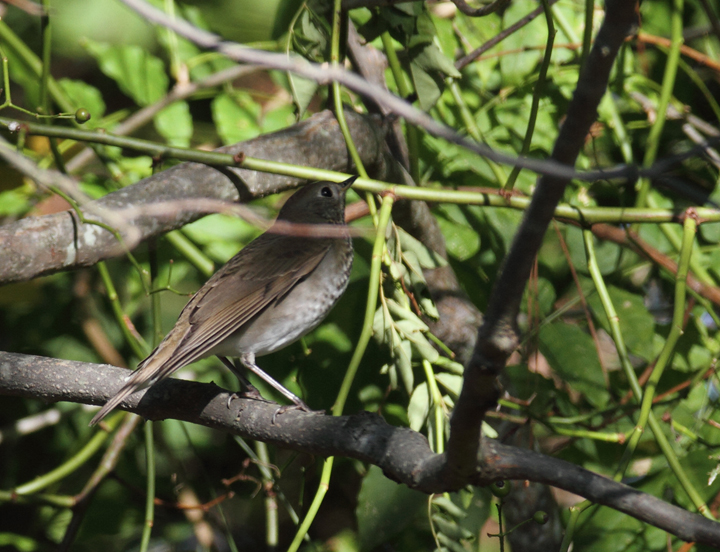Gray-cheeked Thrush (Catharus minimus)
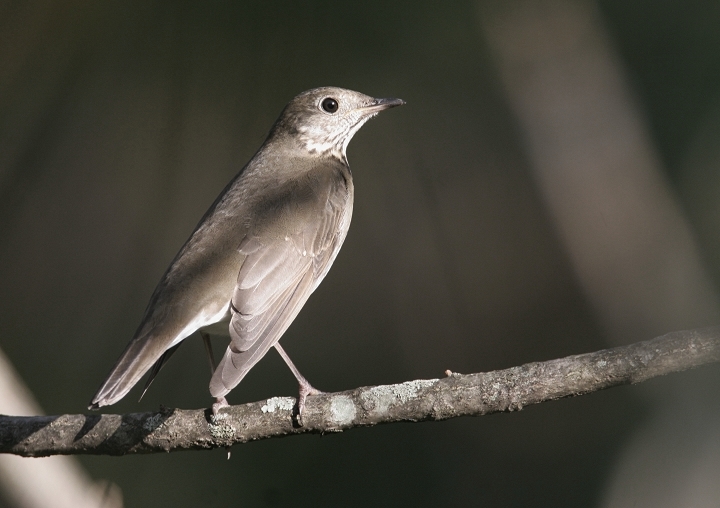
Above and below: A Gray-cheeked Thrush permits a rare photo shoot in Carroll Co., Maryland (10/8/2006).
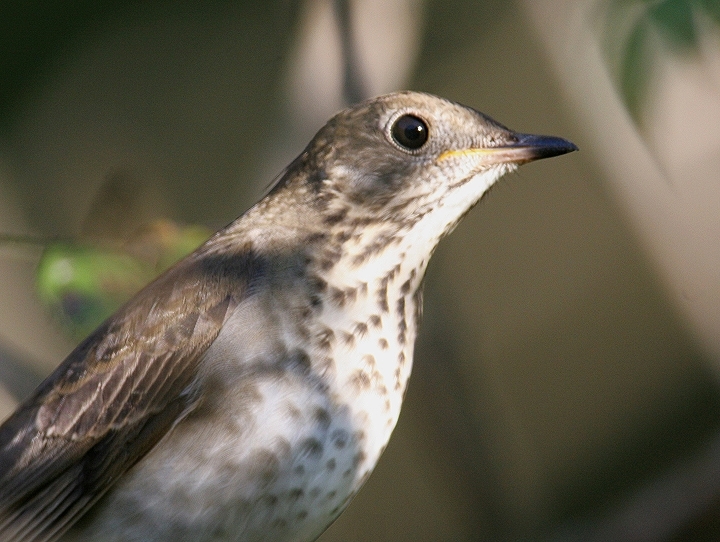
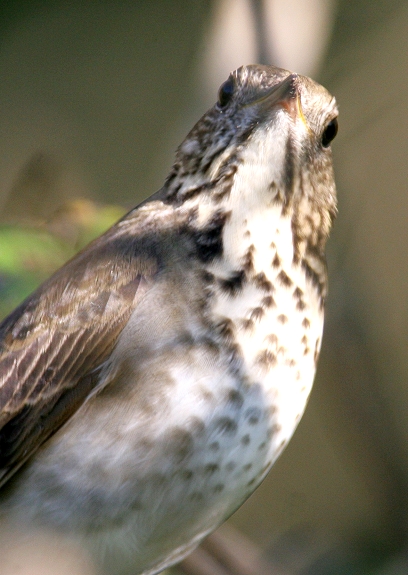
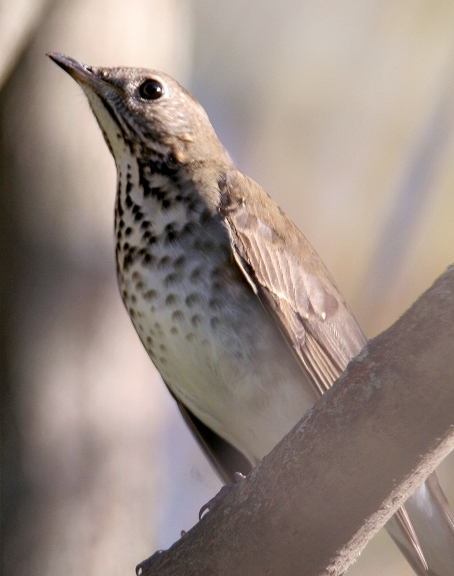
Below: A Gray-cheeked Thrush, probably C. M. minimus, exhibiting plumage on the extreme end for warm, rufous coloration for Gray-cheeked Thrush - Point Lookout SP, Maryland (10/2/2010). This individual demonstrates the need for extreme care in identifying Bicknell's Thrush, especially via plumage details. Differences in voice, although subtle as well, are more reliable. Details that support the ID as Gray-cheeked include the following: Primary projection beyond tertials is greater than the extension of tertials beyond coverts (ratio should be opposite in Bicknell's); subtleties in structure (should be shorter-winged, rounder-headed); apparent ashy cast to the back. Michael O'Brien noted that the primary spacing seems to be in the intermediate zone between Gray-cheeked and Bicknell's and that the warm tones in the tail seem outside the range of our (alicae) Gray-cheekeds. Many thanks to Paul and Michael O'Brien for weighing in on this bird.

